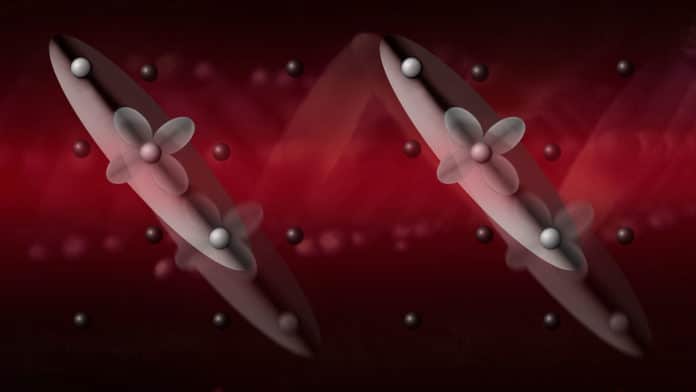Magnetite (Fe3O4) is the oldest magnetic material known to mankind. It is a common mineral with strong magnetic properties, used widely in catalytic processes.
In a new study, scientists uncovered exotic quantum properties hidden in magnetite. The study reveals the existence of low-energy waves that indicate the critical role of electronic interactions with the crystal lattice.
The primary purpose of the study was to determine the excitations involved in the charge-orbital order of magnetite and describe them using advanced theoretical methods. They performed experiments at MIT; synthesized magnetite samples at the AGH University of Science and Technology and conducted theoretical analyses at the Institute of Nuclear Physics of the Polish Academy of Sciences (Przemyslaw Piekarz, Krzysztof Parlinski), the Jagiellonian University and the Max Planck Institute (Andrzej M. Oles), the University of Rome “La Sapienza” (Jose Lorenzana), Northeastern University (Gregory Fiete), the University of Texas at Austin (Martin Rodriguez-Vega), and the Technical University in Ostrava (Dominik Legut).
Prof. Przemyslaw Piekarz At the Institute of Nuclear Physics of the Polish Academy of Sciences, we have been conducting studies on magnetite for many years, using the first-principles calculation method. These studies have indicated that the strong interaction of electrons with lattice vibrations (phonons) plays a vital role in the Verwey transition.”
Scientists quantified the optical response of magnetite in the extreme infrared for several temperatures. Then, they lit up the crystal with an ultrashort laser pulse (pump beam) and estimated the change in the far-infrared absorption with a delayed probe pulse.
Prof. Nuh Gedik, head of the research group at MIT, said, “This is a powerful optical technique that enabled us to take a closer view at the ultrafast phenomena governing the quantum world.”
The estimations uncovered the presence of low-energy excitations of the trimeron order, which correspond to a lattice deformation. The energy of two coherent modes diminishes to zero when moving toward the Verwey change—demonstrating their essential conduct near this transformation.
Advanced theoretical models allowed them to describe the newly discovered excitations as coherent tunneling of polarons. The energy barrier for the tunneling process and other model parameters were calculated using density functional theory (DFT) based on the quantum-mechanical description of molecules and crystals.
The involvement of these waves in the Verwey transition was affirmed using the Ginzburg-Landau model. At last, the computations likewise precluded other potential clarifications for the observed phenomenon, including customary phonons and orbital excitations.
Dr. Edoardo Baldini and Carina Belvin of MIT, the lead authors of the article, said, “The discovery of these waves is of key importance for understanding the properties of magnetite at low temperatures and the Verwey transition mechanism. In a broader context, these results reveal that the combination of ultrafast optical methods and state-of-the-art calculations makes it possible to study quantum materials hosting exotic phases of matter with charge and orbital order.”
The obtained outcomes lead to a few significant ends. To begin with, the trimeron order in magnetite has elementary excitations with a deficient vitality, retaining radiation in the far-infrared region of the electromagnetic spectrum.
Second, these excitations are collective fluctuations of charge and lattice deformation that display essential conduct and are accordingly engaged with the Verwey transition. At long last, the outcomes shed new light on the cooperative mechanism and dynamical properties that lie at the origin of this intricate phase transition.
Prof. Piekarz said, “As for the plans for the future of our team, as part of the next stages of work, we intend to focus on conducting theoretical calculations aimed at better understanding the observed coupled electronic-structural waves.”
Journal Reference:
- Edoardo Baldini et al, Discovery of the soft electronic modes of the trimeron order in magnetite. DOI: 10.1038/s41567-020-0823-y
